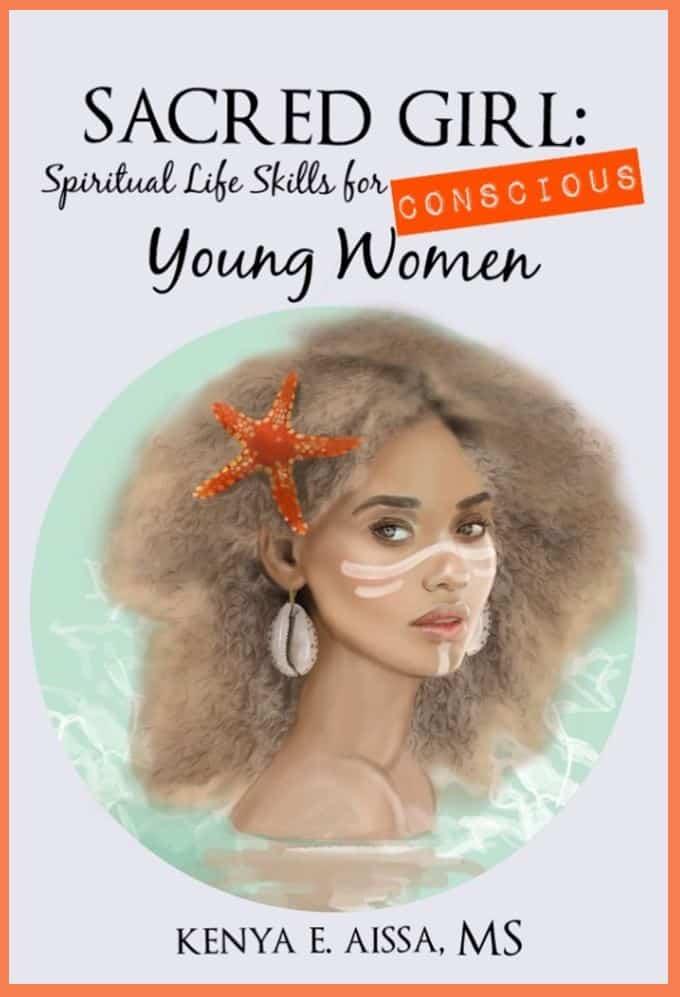
by Kathleen O'Keefe-Kanavos | Sep 14, 2018 | Uncategorized
Dreams and Spiritual Life Lessons for the Sacred Girl (Video Interview)
Are you aware that an alarming number of young girls mature into women who are plagued with low self-esteem, depression, weight issues, relationship problems, and substance abuse?

They often self-medicate by using drugs and alcohol to quiet the chastising voices in their minds.
To make matters worse, research and statistics show that the problems are growing, rather than diminishing, with every generation of women.
Kenya E. Aissa and Kathleen O’Keefe-Kanavos discussed these topics on the Kat Kanavos Show.
Obesity and depression, conditions which have until recently been considered “adult” health problems, are now recognized as common conditions among youths. These two problems are the stepping stones which trigger low self-esteem that can lead to life-long relationship problems due to a lack of self-respect, love and a healthy belief system anchored in spirituality.
Recent data from the National Health and Nutrition Examination Survey estimates that:
17% of youths ages 2-19 years old to be overweight (1) compared to just 5% a few decades ago. Depression also impacts a large population of youths. Prevalence of major depressive disorder has been estimated to be 2% of children and 4-8% of adolescents (2). Note that in the following, “children” generally means up to 12 years of age, while “adolescents” are 13 years and above. The word “youths” is used when referring collectively to both groups.
It is important to cultivate self-awareness to follow your dreams.

girls-1487825_960_720 Adina Voic u Pixabay Free CC0 Public Domain No Attribution Required.jpg
According to research at Cornell University self-awareness is the foundation of emotional intelligence. Good girls do finish first. Research has also shown that a high self-awareness score is a crucial predictor of overall success. Acclaimed psychologist Daniel Goleman points out that self-awareness is the foundation of emotional intelligence and that mastery of emotional self-awareness is a key attribute of successful leaders.
Emotional Self-Awareness means you understand your own emotions and their impact on your performance. You know what you are feeling and why—and how it helps or hurts what you are trying to do.
Body image and identifying your emotional triggers is important to enhance Body-Positivity.
Taking time for unstructured play with your daughter will teach her how to interact and play with her daughter and granddaughter. Even mother bears play with their cubs. Play in both the animal and the human world is an important component of self-awareness for future success as an adult.
Susan Stiffelman, MFT, an educational therapist and author of Parenting Without Power Struggles says, “Playing catch in the yard, dancing in the living room, and chasing after lightning bugs provide opportunities for intellectual, physical, and personal development. Stiffelman also suggests finding a hobby or two for yourself and, “Allowing your child to see you trying something new may inspire her to do the same.”

child-1538557_1280-Pezibear-pixabay.com-Public-Domain-Free-Commercial-Use-No-Attribution-Required.jpg
In conclusion, looking within may hold the Key to a successful future.
Faced with today’s challenges, it has become more important than ever for young women to look within themselves using angel-guided dreams and prayers for spiritual renewal, strength, and comfort. And, this is where the guidance of adults is so important. We can help young women by providing them with a non-judgmental safe-space for self-reflection and discussion. Studies have shown that they will raise their daughters in the same manner they were raised. The young girls of today are the future mothers of tomorrow.
By understanding the needs of young women today, we can help to ensure their success in society as healthy sacred women of tomorrow. Spiritual self-reliance is important for a healthy mind-body-spirit. Leaving our future’s spiritual well-being to chance is a risky gamble on the future.
Kenya- YouTube- https://www.youtube.com/watch?v=FAh4SDX_Pqc&list=PLFv46idmu66i6UjbSIjTHISFRlDW0ogPZ&index =2
About the Author: Kathleen (Kat) O’Keefe-Kanavos is the coauthor of Dreams That Can Save Your Life and three-time cancer survivor. Her dreams diagnosed her illness as seen on Dr. Oz, Doctors, NBC News, American Express Open, in Newspapers and magazines. She’s a Contributor to Chicken Soup for the Soul, TV/Radio Host/Producer- Wicked Housewives On Cape Cod™, Kat Kanavos Show, Internationally Syndicated Columnist in BIZ360, Dream Columnist in New Earth Chronicles, and Positive Tribe Magazine, Keynote Speaker, Performance Coach who taught Special Ed & Psychology @US,. and Lecturer who promotes patient advocacy and Spiritual guidance. www.KathleenOkeefeKanavos.com
Photo Credit:
book cover photo used with permission of the author Kenya E. Aissa.
girls-1487825_960_720 Adina Voic u Pixabay Free CC0 Public Domain No Attribution Required.jpg
child-1538557_1280-Pezibear-pixabay.com-Public-Domain-Free-Commercial-Use-No-Attribution-Required.jpg
Research Links:
Childhood Obesity and Depression: Connection between these Growing Problems in Growing Children
Gloria M. Reeves, MD,*,1,2 Teodor T. Postolache, MD,2 and Soren Snitker, MD, PhD3 https://www.ncbi.nlm.nih.gov/pmc/articles/PMC2568994/
Nih Public Access Growing Problems In Growing Children Int .., http://www.cde.state.co.us/healthandwellness/depressionandobesity2008nih
How To Raise Well-rounded Kids – Parents, https://www.parents.com/kids/development/social/raise-well-rounded-kids/
New Study Shows Nice Guys Finish First https://www.amanet.org/training/articles/new-study-shows-nice-guys-finish-first.aspx?pcode=XCRP
Parents https://www.parents.com/kids/development/social/raise-well-rounded-kids/

by Kathleen O'Keefe-Kanavos | Sep 12, 2018 | Uncategorized

“For you to become the master of your destiny, you need to dive into your subconscious mind and reach into your super-consciousness.” ~ Ilona Selke
We are living in consciousness and a consciously active universe where dreaming up impossibilities like Albert Einstein’s equation E = mc2 are everyday occurrences. We then bring those dreams into our waking world, and the Big Dream becomes a Big Part of our everyday life.
When is the last time you can honestly say you dreamed BIG? By big I mean in your dream you received a message answered an important question for guidance in your life. How and why does dreaming big happen? Because the Universe is always listening, even while you dream.
A perfect example of a Big Dream is Dr. Albert Einstein’s theory E = mc2.
Einstein was a Big Dreamer and got many of his theories, inventions, and ideas from dreams.
His equation E = mc2 shows that energy and mass are interchangeable. Dreams are energy. Our body is mass. This theory of special relativity was developed by Albert Einstein in 1905, and it forms part of the basis of modern day physics.
According to many dream theorists dreams aren’t supposed to make any sense.
Yet big dreams have changed our world for the better. Another example of this is a guy who dreams about getting stabbed and then invents the sewing machine. So one of the Big Dream innovations responsible for the clothes you’re wearing now was Elias Howe’s lock-stitch sewing machine which came to him in a violent murder dream.
Dreaming is part of the magic of manifesting. While we may think small in our waking world, we can Dream Big by tapping into Universal Wisdom and bring that wisdom back into reality with us.
According to Ilona, “At the same time you dream big you create a better life for yourself and the planet. For you to become a master of your destiny, you need to dive into your subconscious mind and reach into your super-conscience.”
Travel with Ilona across the globe and into other levels of consciousness during this interview as she talks about The Power of Dreaming, how to Turbo Charge your dreams and Goals.
My favorite part of the interview was our discussion about Out of Body Sex.
You will be inspired and equipped to make your dreams come true and to create a better life for yourself using Ilona’s techniques and tips shared during the interview.
Ilona Silke has written four books, produced 25 music and meditation CDs, co-authored a book with Hay House’s Brian Tracy and another with Chicken Soup for the Soul’s Jack Canfield. She has also been a regular guest on A&E and BRAVO TV and was a producer and TV host for the Quantum Living Show on Women’s Broadcast TV.
Ilona Selke Dreams Big and lives her dreams. Learn more about her @ www.ilonaselke.com
About the Author: Kathleen (Kat) O’Keefe-Kanavos is a three-time Breast Cancer Survivor, as seen on Dr. Oz, DOCTORS, NBC, and CBS, whose Divine Dreams diagnose her illness, and was a Dream Research Participant for Duke University’s Dr. Larry Burk‘s Breast Cancer Dream Research Program. They co-wrote, Dreams That Can Save Your Life. She is a Syndicated Columnist, TV Producer/Host and award-winning Author/Lecturer who promotes patient advocacy and connecting with Divine Spiritual-guidance through Dreams for success in health, wealth, and relationships. “Don’t tell God how big your problems are. Tell your problems how big your God is.” More @ www.KathleenOKeefeKanavos.com
Article Research:
Einstein’s Theory of Special Relativity,By Elizabeth Howell, Space.com Contributor | March 30, 2017, 12:17am ET https://www.space.com/36273-theory-special-relativity.html
5 Famous Things You Won’t Believe Were Invented in Dreams; http://www.cracked.com/article_20498_5-famous-things-you-wont-believe-were-invented-in-dreams.html

by Kathleen O'Keefe-Kanavos | Sep 6, 2018 | Uncategorized
As I walk toward my computer, morning coffee in hand, high pitched pings greet and alert me to the fact that someone had sent an email. Perhaps it is another invitation to be a guest on a radio show to discuss dreams, I thought. No. The email is a cry for dream-help.

It reads, “My dreams are so real I often do not know if I am really dreaming or in another dimension. How can I tell?” “Pinch yourself to see if you are dreaming,” might be something you have heard someone say to you. Another old cliché often used is, “pinch me, I must be dreaming.” There is a good reason for this call to action.
This is the story of dreams that are more real than reality. Have you ever had such a dream? Pain is the answer.
Some studies indicate that dream pain is rare and may be beyond the representational capability of dreaming. In other words, pain is just too complicated in a dream to really work.
This excerpt is an example taken from The Neurocritic Blogspot.
Once I dreamed I was lying on my stomach, getting a tattoo on my calf against my will. Because it was a particularly malevolent tattoo studio, I cried out in the dream. When I woke up, I felt no pain at all.
The pain in the dream woke the dreamer, but in the waking world, the pain was nonexistent.
While you are in the dream state, your dreams can be as vivid as reality. One type of reality dream we can have is known as the Waking Dream. We believe we have awakened, are preparing for work or school as we do daily, but when the bus doors open the driver is Winney the Poo. Ding-ding! We pinch ourselves to be sure this time we really are awake and not still dreaming.
Another type of Waking Dream is when you dream that you woke up and begin your day as you normally do and then suddenly you really do wake up…and you sit up, pinch yourself or touch your face to see if you are really awake this time.
Pinching is reassuring because pain is the reality.
When pain wakes us up from a dream, it can be to remind us that we were dreaming, but are now awake. Although we may dream of pain, we may not actually feel the pain. For example, we may dream that our hand is on fire. We may watch the blazes engulf our fingers, yet feel no burning sensation or pain in the dream. We may even comment to ourselves in the dream that the fire is quite beautiful. However, if reality begins to creep into our dream our hand may begin to feel hot or uncomfortable, and this will usually wake us from the dream.
Reality has validation in discomfort.
In most cases, reality can be validated in the waking world using real-life consequences. Dropping a raw egg on a hard kitchen floor usually results in an expected consequence. Just the thought may make you cringe.
However, in a dream, the floor might suddenly open up and swallow the egg, or the egg could bounce and stick to the ceiling, grow wings and fly away like a bat, all of which would not cause the dreamer even to bat an eye.
It is this, Alice in Wonderland Mad Hatter’s Tea Party that makes dreams so amusing.
However, you can also have a Precognitive Dream which predicts the future through a sixth sense. This dream may later be validated in reality and by reality. An example of such a dream is a medical report confirming a diagnostic dream that turns out to be an early warning sign of a disease.
Your vivid Lucid Dream validated during your waking life is part of your reality.
Examples of this type of validated dreaming grounded in reality appear in the book Dreams That Can Save Your Life: Early Warning Signs of Cancer and Other Diseases. The dream research is based on the diagnostic and precognitive dreams from a Breast Cancer Dream Group involving eighteen women whose dreams diagnosed their breast cancer that was later validated by pathology reports. Dr. Larry Burk, Radiologist at Duke University Medical, headed the research, which has been published distributed in medical journals and by Inner Traditions/Simon and Schuster. The bizarre precognitive and diagnostic recurrent breast cancer dreams were grounded by the reality of pathology reports in the waking world of medicine.
Reality is grounded.
An example of grounded reality would be the inability to effortlessly fly through the air with our bodies when we are awake. This explains how waking reality has validation.
Flying may represent a sense of freedom from reality.
According to Psychology Today, a flying dream can serve as a sort of escape from the pressures of our waking world which is represented by the ground. This is also an example of the play-on-words often represented in dreams. In reality, a plane is grounded when weather conditions do not permit flight. In a dream, we may be grounded when life becomes too burdensome to allow us freedom or lightness of being capable of flight.
Much like the fight or flight response of a bird, we may take flight from a disturbing situation in our dream. Feeling as free and flighty as a bird does not mean we can do so when awake.
Reality is relative to the environment in which it is experienced.
And that brings us back to the first statement in this article, a dream to the dreamer may feel as real during that reality as our waking life feels to us during our daily reality.I hope these explanations help to answer your cry for Dream-help concerning dreams vs. reality and how you can learn how to know the difference.
About the Author: Kathleen (Kat) O’Keefe-Kanavos, author and three-time cancer survivor whose guided dreams diagnosed her illness as seen on Dr. Oz, The Doctors, NBC News, American Express Open, in Newspapers and magazines. She’s a Contributing author to Chicken Soup for the Soul, TV/Radio Host/Producer- Wicked Housewives On Cape Cod™, the Kat Kanavos Show, Internationally Syndicated Columnist in BIZ360, Keynote Speaker and Lecturer who promotes patient advocacy and Spiritual guidance. www.KathleenOkeefeKanavos.com
Photo Credit: Pixabay Dream CastlePixabay httpspixabay.com endreamcastle europe and america 1518227 No Attribution Required
Article Research:
Pain in dreams-PubMed-NCBI, Sleep. 1993 Aug;16(5):490-8 Nielsen TA1, McGregor DL, Zadra A, Ilnicki D, Ouellet L. https://www.ncbi.nlm.nih.gov/pubmed/7690981
waking dream – Wiktionary https://en.wiktionary.org/wiki/waking_dream
Dreams Vs Reality: How Do You Know Which Is Which .., https://www.bizcatalyst360.com/dreams-vs-reality-how-do-you-know-which-is-which/
http://neurocritic.blogspot.com/
https://www.world-of-lucid-dreaming.com/precognitive-dreams.html
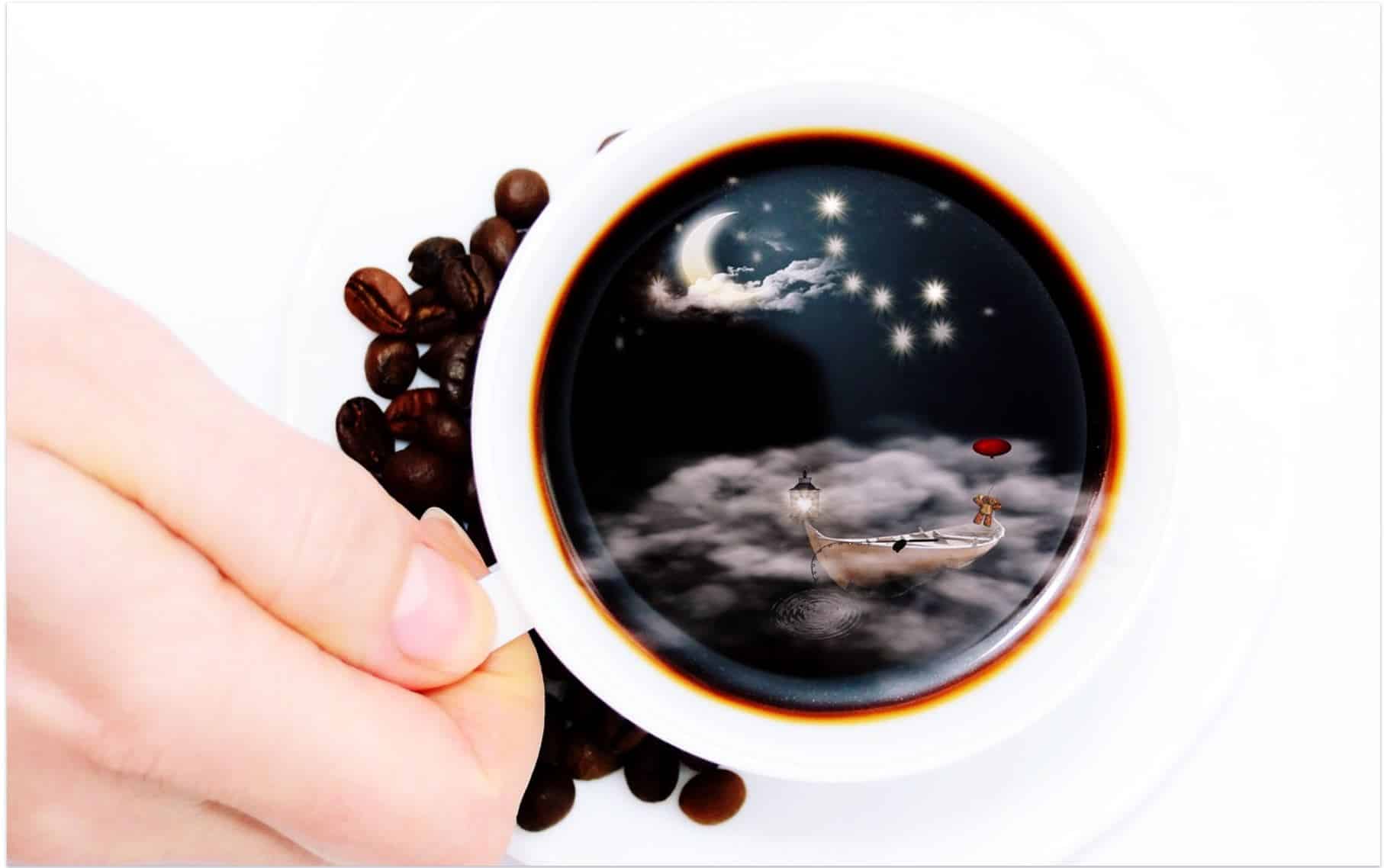
by Kathleen O'Keefe-Kanavos | Sep 3, 2018 | Uncategorized
Like the New England weather at Harvard, if you don’t like current scientific findings on new health topics, wait five minutes, and it may change. Coffee lovers and cancer patients worldwide hope this recent one remains the same, especially concerning coffee’s impact on prostate cancer.

In part one and two of this three-part blog, we discussed coffee’s positive effect on Parkinson’s disease, prostate cancer, depression, suicide and how coffee is now considered the second healthiest beverage after water.
The conclusion, according to Nutritionfacts.org, and based on all the best studies to date listed in this article, is that coffee consumption may indeed be associated with a small reduction in mortality, on the order of a 3 percent lower risk of premature death for each cup of coffee consumed daily.
If coffee is good for the body is it also good for the spirit? Yes!
The Harvard Gazette explained that caffeine could lower the risk of depression among coffee drinkers because it stimulates the central nervous system which may act as a mild antidepressant by boosting production of certain neurotransmitters in the brain, including serotonin, dopamine, and noradrenaline.
Harvard University researchers discovered that people who drank two or more cups of coffee each day appeared to have about half the suicide risk compared to non-coffee drinkers. A Kaiser Permanente study found that people who drank more than six cups a day were 80 percent less likely to commit suicide. According to researchers at the Harvard School of Public Health (HSPH) drinking several cups of coffee daily appears to reduce the risk of suicide in men and women by about 50 percent. The new study was published online July 2, 2018, in The World Journal of Biological Psychiatry.
“Unlike previous investigations, we were able to assess association of consumption of caffeinated and non-caffeinated beverages, and we identify caffeine as the most likely candidate of any putative protective effect of coffee,” said lead researcher Michel Lucas, research fellow in the Department of Nutrition at HSPH.
Your takeaway message of these studies? The benefits far outweigh the risks.
Dr. Marc Gunter, author of the European study summed up the benefits of drinking coffee when he stated, “The takeaway message would be that drinking a couple cups of coffee a day doesn’t do you any harm, and actually, it might be doing you some good.”
Dr. Gunter’s summation was seconded by Dr. Veronica Wendy Setiawan, associate professor of preventative medicine at USC’s Keck School of Medicine, who led the study on nonwhite populations, when she said, “These studies and the previous studies suggest that for a majority of people, there’s no long-term harm from drinking coffee. Moderate coffee consumption can be incorporated into a healthy diet and lifestyle.”
For years my non-coffee-drinking husband would “tisk, tisk” my morning coffee routine and follow it up with, “Be stubborn about your health despite proof that coffee is bad for you. Just sayin’.” The current research is a new day dawning because now my husband brings me coffee in bed. And sometimes, to be sure it is perfect before saying, “This cup is for you,” he will even sneak a sip or two.
I know, I know! I promised not to rhyme. But, my coffee made me do it just one more time. I’m done!
About the Author: Kathleen (Kat) O’Keefe-Kanavos is a three-time Breast Cancer Survivor, as seen on Dr. Oz Show, DOCTORS, NBC, and CBS, whose dreams diagnose her illness, and was a Dream Research Participant for Dr. Larry Burk‘s Dream Research. They co-wrote, Dreams That Can Save Your Life. She is a TV Producer/Host and award-winning Author/Lecturer who promotes patient advocacy and connecting with Inner-guidance through Dreams for success in health, wealth, and relationships. Learn more @ KathleenOKeefeKanavos.com
Photo credit:
httpspixabay.comencup-coffee-cup-cup-of-coffee-moon-1956716Pixel2013 Free for Commercial Use No attribution required
Article Research for Parts one, two and three.
Prostate Cancer Foundation- https://www.pcf.org/new-study-shows-coffee-health-benefits/?gclid=EAIaIQobChMIpv2c1KeD3QIV3I2zCh3eOQrTEAAYASAAEgKWMvD_BwE
What Do You Get From Drinking Coffee? – Medtrend, https://medtrend.org/what-do-you-get-from-drinking-coffee/
New Study Coffee Health Benefits- https://www.pcf.org/new-study-shows-coffee-health-benefits/?gclid=EAIaIQobChMIpv2c1KeD3QIV3I2zCh3eOQrTEAAYASAAEgKWMvD_BwE
Nutritional Facts.org- https://nutritionfacts.org/topics/coffee/?gclid=EAIaIQobChMIpv2c1KeD3QIV3I2zCh3eOQrTEAAYAiAAEgIaI_D_BwE
Coffee | Health Topics | Nutritionfacts.org, https://nutritionfacts.org/topics/coffee/
US Beverage Panel Recommendations http://www.cpc.unc.edu/projects/nutrans/policy/beverage/us-beverage-panel/panel_recommendations
USC News https://news.usc.edu/97761/new-study-links-coffee-consumption-to-decreased-risk-of-colorectal-cancer/
New Study Shows Coffee Health Benefits – Pcf, https://www.pcf.org/new-study-shows-coffee-health-benefits/
Study links coffee consumption to decreased risk of colorectal cancer https://news.usc.edu/97761/new-study-links-coffee-consumption-to-decreased-risk-of-colorectal-cancer/
April issue of Cancer Epidemiology, Biomarkers & Prevention http://cebp.aacrjournals.org/
Coffee Drinking Tied To Lower Risk Of Suicide – Harvard .., https://news.harvard.edu/gazette/story/2013/07/drinking-coffee-may-reduce-risk-o
Dr. Mark Gunter https://www.imperial.ac.uk/people/m.gunter/publications.html
Dr. Mark Coffee Drinking and Mortality in 10 European Countries: A Multinational Cohort Study. https://www.ncbi.nlm.nih.gov/pubmed/28693038
Dr. Veronica Setiawan https://keck.usc.edu/faculty-search/veronica-w-setiawan/
https://www.researchgate.net/profile/Veronica_Setiawan
Harvard Gazette- https://news.harvard.edu/gazette/story/2013/07/drinking-coffee-may-reduce-risk-of-suicide-by-50/
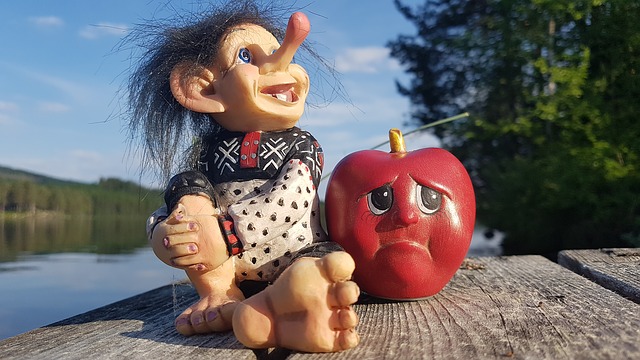
by Kathleen O'Keefe-Kanavos | Aug 30, 2018 | Uncategorized
Many of us have heard of Trolls in fairytales, but when they show up on your social media sites, they become a real nightmare. They are also known as modern-day Cyber-bullies. There is only one way to get rid of them. Starve them. Don’t feed the Trolls.
 What is a social media Troll and how do you know if you have attracted one?
What is a social media Troll and how do you know if you have attracted one?
In fairytales like Three Billy Goats Gruff, a Troll living beneath a bridge used extortion, threats, and bullying to try to eat all three of the goats. But it was positive wisdom, not negative threats that prevailed. This was a Norwegian fairytale first published between 1841 and 1844, and in Norse mythology and Scandinavian folklore a troll is described as a class of beings that
“dwell in isolated rocks, mountains, or caves, live together in small family units, and are rarely helpful to human beings.”
The Nors also called Trolls auðsug jǫtuns, which translated means “giant-wealth-suckers.”
Mythical Trolls were known to try to suck the success right out of their victims. This behavior continues today with modern-day social media and internet Trolls. In mythology Trolls also displayed a habit of “bergtagning” (kidnapping’; literally) and overrunning a farm or estate. Your internet success is the today’s equivalent to a farm or estate and that success is a Troll’s dinner.
Now we know where modern day trolls got their name and how they are still living up to it.
In Scandinavian folklore, Trolls become defined as a particular type of being. There was the Skogtroll who was a forest dweller, and the bjergtrolde which were mountain-trolls. All Trolls are solitary creatures who live in dark, dank places and do not like the sun or daylight because according to Folklore, Trolls turn to stone upon contact with sunlight.
Here is a list of the 5 most prevalent modern-day Trolls and signs that they are on your site.
Bully Troll- calls people names and will pick on everyone and anyone, to get a negative emotional response from them. Sign- name-calling and profanity.
Debate Troll– loves a good argument, turns facts into fiction and they believe they are always right, and everyone else is wrong. Sign– they leave long threads or arguments with other commenters in community comment sections.
Professor Troll– uses a commenter’s sentence structure, spelling, grammar mistakes and “rules and regulations” as an excuse to insult them. Sign- belittling commenting with the correction behind an asterisk symbol.
Victim Troll- turns any content, but especially humorous ones, into an argument by playing the victim. Sign- online crying-gags and people “walking or commenting on egg shells” around them.
Kidnap/Hijack (“bergtagning”) Troll– posts something completely off-topic to hijack the conversation and kidnap the commenters to some other irrelevant thing that was posted by the Troll. Sign- a sudden shift in an active, established discussion thread.
Where do modern-day online Trolls live and forage for food?
Today Twitter, Facebook, LinkedIn, and Google+ is the dank mountain cave of many a Troll, and they want to overrun the social media estate you have built or you online-farm displaying the fruits of your labor and suck the success right out of it. There are also Trolls in office buildings and work places. Those Trolls are more easily recognizable because they are two-faced.
Trolls no long try to take over farms and estates. They kidnap and hijack pages and forums.
Rather than having forest or mountain Trolls we now have social media and internet Trolls. If you are on social media long enough, you will probably get a Troll or two. Most modern day Trolls stalk social media pages, and internet radio shows because they love the limelight the shows offer them with a ready-made audience. Other Trolls prefer to live in online-forums. And, the more social media sites you have, the higher your chances are of attracting multiple types of Trolls.
How do you know if you encountered a Troll? How do you recognize them from inquisitive followers?
Trolls are tricky. Anonymous online Trolls are people who, per the Urban Dictionary, “purposely and deliberately start an argument in a manner which attacks others on a forum without in any way listening to the arguments proposed by his peers.” Their main purpose is usually self-amusement that is hiding behind self-rightness. A secondary purpose may be to suck the success out of the forum and then take it over. To do this, they shift the positivity and growth in the group to negativity and destruction. You may see or feel it as it is happening when page followers begin to drop, and the page’s numbers decline or participation drops off, and the page seems “empty.” You may be left wondering, “Why this is happening and what can I do to make a change?”
Now that you know how to spot a Troll what can you do to get rid of a Troll? Here are 6 suggestions.
- Keep your site positive while you deal with your Troll. Remember, Trolls are attracted to the light but cannot live in the light. The positive light will turn them to stone.
- Monitor your live internet and radio shows before you bring someone into the audience.
- Don’t be tricked. Find and learn how to use your BLOCK button. Trolls are tricky and will try to turn the tables on you making you think they were “just helping you.” If you do not feel helped it is because you were not helped.
- Do not engage. The argument is their food. Like most bullies, they are masters at word manipulation and thrive from arguments.
- Do be the light that turns them to stone. Ignore them, and you starve them. Engage them, and you feed them.
- If suggestions 1-5 do not work- use banning/blocking or report them to authorities, or close off comment sections entirely from a blog post, video page or topic thread.
In all the mythological stories the Trolls were defeated by brains. They were outsmarted by average people and in one case, a tiny but clever goat. Be smart. Don’t feed the Trolls!
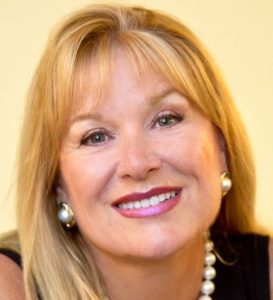 About the Author: Kathleen (Kat) O’Keefe-Kanavos is a three-time Breast Cancer Survivor, as seen on Dr. Oz, DOCTORS, NBC, and CBS, whose Divine Dreams diagnose her illness, and was a Dream Research Participant for Duke University’s Dr. Larry Burk‘s Breast Cancer Dream Research Program. They co-wrote, Dreams That Can Save Your Life. She is a Syndicated Columnist, TV Producer/Host and award-winning Author/Lecturer who promotes patient advocacy and connecting with Divine Spiritual-guidance through Dreams for success in health, wealth, and relationships. “Don’t tell God how big your problems are. Tell your problems how big your God is.” Learn more @ www.KathleenOKeefeKanavos.com
About the Author: Kathleen (Kat) O’Keefe-Kanavos is a three-time Breast Cancer Survivor, as seen on Dr. Oz, DOCTORS, NBC, and CBS, whose Divine Dreams diagnose her illness, and was a Dream Research Participant for Duke University’s Dr. Larry Burk‘s Breast Cancer Dream Research Program. They co-wrote, Dreams That Can Save Your Life. She is a Syndicated Columnist, TV Producer/Host and award-winning Author/Lecturer who promotes patient advocacy and connecting with Divine Spiritual-guidance through Dreams for success in health, wealth, and relationships. “Don’t tell God how big your problems are. Tell your problems how big your God is.” Learn more @ www.KathleenOKeefeKanavos.com
Photo credit: Broesis-art-2307407_1280-Pixabay-CCO-Public-Domain-FREE-for-commercial-use-No-attribution-required.jpg
Article Research:
https://en.wikipedia.org/wiki/Troll
Three Billy Goats Gruff https://www.pitt.edu/~dash/type0122e.html
The Trolls In Our Midst: What Fairytales Can Tell Us About .., https://electricliterature.com/the-trolls-in-our-midst-what-fairytales-can-tell-
10 Types of Internet Trolls You’ll Meet Online https://www.lifewire.com/types-of-internet-trolls-3485894

by Kathleen O'Keefe-Kanavos | Aug 27, 2018 | Uncategorized
Like the New England weather at Harvard, if you don’t like current scientific findings on new health topics, wait five minutes, and it may change. Coffee lovers and cancer patients worldwide hope this recent one remains the same, especially concerning coffee’s impact on prostate cancer.

In part one of this three-part blog, we looked at current research concerning the effects of coffee on our health, including its impact on cancer and suicide.
According to the Prostate Cancer Foundation these studies tracked over 700,000 people across multiple ethnic groups in over 10 European countries and the U.S. It was discovered that even drinking decaffeinated coffee supplied benefits to individuals over those who did not drink the beverage. The studies have even dispelled the old myth that caffeine might increase the risk of atrial fibrillation, an irregular heart rhythm. Drinking low-dose caffeine, defined as fewer than six cups of coffee a day, may even have a protective effect on heart rhythm.
Research published in the April issue of Cancer Epidemiology, Biomarkers & Prevention, Researchers from the USC Norris Comprehensive Cancer Center examined 5,100 men and women diagnosed with colorectal cancer within the past six months, and an additional 4,000 men and women with no history of colorectal cancer to serve as a control group.
“We found that drinking coffee is associated with lower risk of colorectal cancer, and the more coffee consumed, the lower the risk,” said Stephen Gruber, director of the USC Norris Comprehensive Cancer Center and senior author of the study.
What about coffee and Parkinson ’s disease?
Coffee consumption seems to be associated with about one-third lower risk concerning Parkinson’s Disease. Caffeine appears to be the key ingredient because tea also seems protective and decaf coffee does not. Parkinson’s patients treated with the caffeine equivalent of two cups of coffee a day significantly improved movement symptoms within three weeks.
The studies concluded that consuming 1-2 cups of coffee per day resulted in a 12% lower risk of mortality and consuming 2-4 cups a day resulted in an 18% lower risk of mortality. These results in inverse rates of mortality to coffee consumption showed in diseases such as diabetes, heart disease, kidney disease, stroke, and cancer.
How can coffee help prevent diseases from cancer and heart attack to suicide?
According to Nutritional Facts.org, and USC News coffee is a complex mixture of compounds that have various biological effects, such as anti-inflammatory properties. It is believed that in addition to these properties, coffee is a source of polyphenols which have potent antioxidant properties, which helps cells cope with free radicals in the blood.
Do you know why coffee has been named the number-two healthiest beverage?
The Beverage Guidance Panel assembled to provide recommendations on benefits and risks of various beverage categories, found tea and coffee—preferably without creamer or sweetener—tied as the number-two healthiest beverages, second only to water. The studies in this article are published in the Annals of Internal Medicine.
The National Institutes of Health–AARP Diet and Health Study is the largest-ever prospective study conducted on diet and health. Its research concluded that people who drank six or more cups of coffee per day had a 10 to 15 percent lower mortality from heart disease, respiratory disease, stroke, injuries, accidents, diabetes, and infections. However, the opposite effect was found when a study looked at people 55 and younger. Drinking more than six cups of coffee daily increased their risk of death.
Don’t miss part 3 of this 3 part blog as we continue to discuss the current research on how coffee has been proved to reduce mortality rates and sum up the benefits and risks of drinking coffee. How much is too much coffee and is it worse than not enough?
About the Author: Kathleen (Kat) O’Keefe-Kanavos is a three-time Breast Cancer Survivor, as seen on Dr. Oz Show, DOCTORS, NBC, and CBS, whose dreams diagnose her illness, and was a Dream Research Participant for Dr. Larry Burk‘s Dream Research. They co-wrote, Dreams That Can Save Your Life. She is a TV Producer/Host and award-winning Author/Lecturer who promotes patient advocacy and connecting with Inner-guidance through Dreams for success in health, wealth, and relationships. Learn more @ www.KathleenOKeefeKanavos.com
photo credit:
httpspixabay.comencup-coffee-cup-cup-of-coffee-moon-1956716Pixel2013 Free for Commercial Use No attribution required
Blog Research:
New Study Shows Coffee Health Benefits https://www.pcf.org/new-study-shows-coffee-health-benefits/?gclid=EAIaIQobChMIpv2c1KeD3QIV3I2zCh3eOQrTEAAYASAAEgKWMvD_BwE
April issue of Cancer Epidemiology, Biomarkers & Prevention http://cebp.aacrjournals.org/
Coffee Drinking Tied To Lower Risk Of Suicide – Harvard .., https://news.harvard.edu/gazette/story/2013/07/drinking-coffee-may-reduce-risk-o
Dr. Mark Gunter https://www.imperial.ac.uk/people/m.gunter/publications.html
Dr. Mark Coffee Drinking and Mortality in 10 European Countries: A Multinational Cohort Study. https://www.ncbi.nlm.nih.gov/pubmed/28693038
Dr. Veronica Setiawan https://keck.usc.edu/faculty-search/veronica-w-setiawan/
https://www.researchgate.net/profile/Veronica_Setiawan






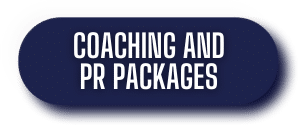
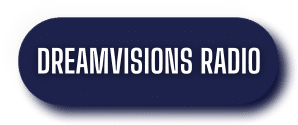
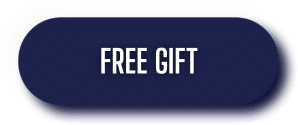
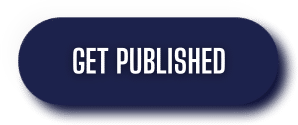
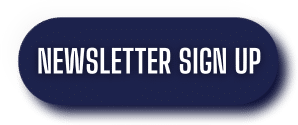





 What is a social media Troll and how do you know if you have attracted one?
What is a social media Troll and how do you know if you have attracted one? About the Author: Kathleen (Kat) O’Keefe-Kanavos is a three-time Breast Cancer Survivor, as seen on Dr. Oz, DOCTORS, NBC, and CBS, whose Divine Dreams diagnose her illness, and was a Dream Research Participant for Duke University’s Dr. Larry Burk‘s Breast Cancer Dream Research Program. They co-wrote, Dreams That Can Save Your Life. She is a Syndicated Columnist, TV Producer/Host and award-winning Author/Lecturer who promotes patient advocacy and connecting with Divine Spiritual-guidance through Dreams for success in health, wealth, and relationships. “Don’t tell God how big your problems are. Tell your problems how big your God is.” Learn more @ www.KathleenOKeefeKanavos.com
About the Author: Kathleen (Kat) O’Keefe-Kanavos is a three-time Breast Cancer Survivor, as seen on Dr. Oz, DOCTORS, NBC, and CBS, whose Divine Dreams diagnose her illness, and was a Dream Research Participant for Duke University’s Dr. Larry Burk‘s Breast Cancer Dream Research Program. They co-wrote, Dreams That Can Save Your Life. She is a Syndicated Columnist, TV Producer/Host and award-winning Author/Lecturer who promotes patient advocacy and connecting with Divine Spiritual-guidance through Dreams for success in health, wealth, and relationships. “Don’t tell God how big your problems are. Tell your problems how big your God is.” Learn more @ www.KathleenOKeefeKanavos.com